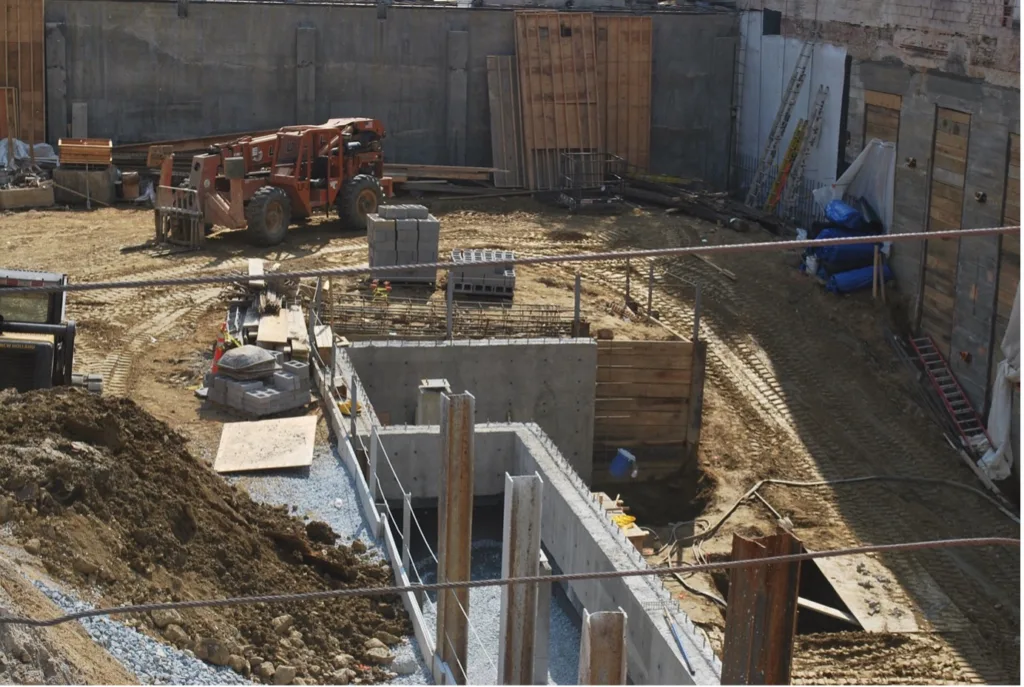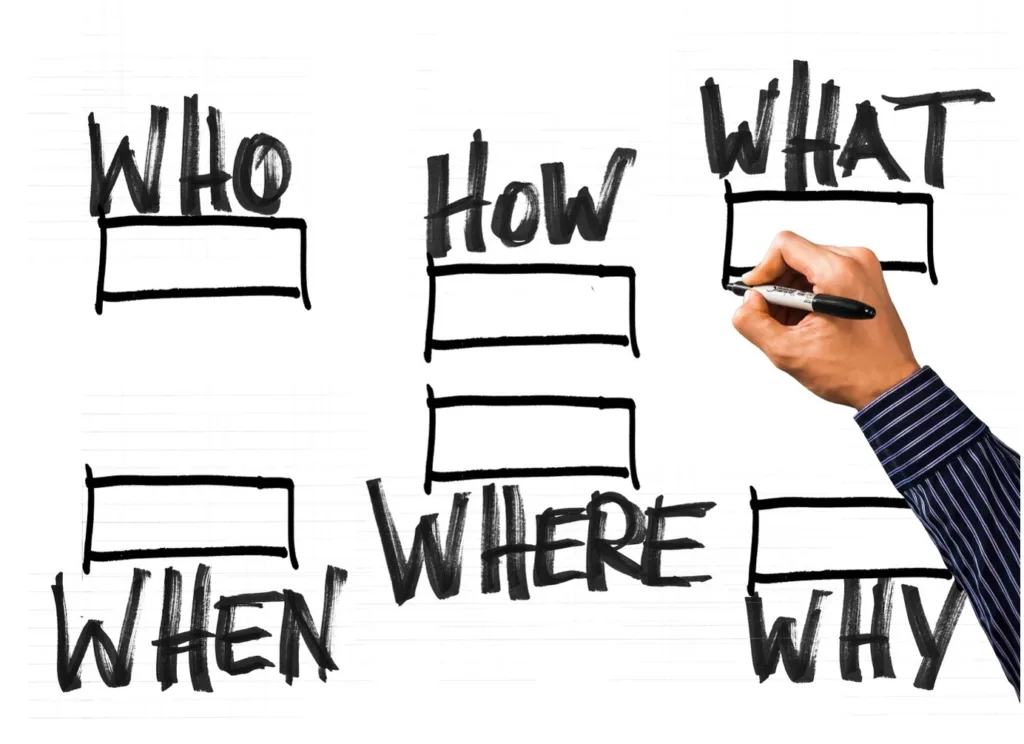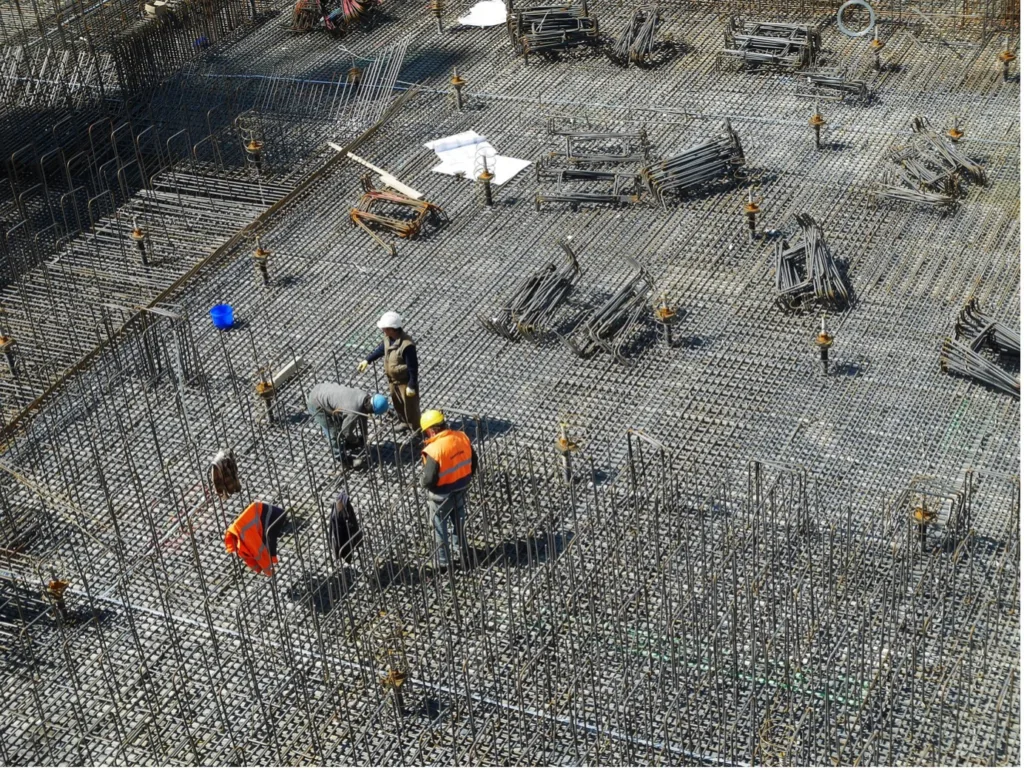Managing multiple construction projects requires several strategic decisions. In this write-up, we have disclosed ten strategies that project managers and contractors can use to achieve this endeavor with superlative success.
If you are a novice project manager or contractor, you might have been tempted to take on multiple projects at some point. And why shouldn’t you? The global construction industry is expected to reach 14.4 trillion in 2030, and when you have the option to be a part of this growing sector, there is no doubt that you should milk the cow right now.
But do you know what is the prime challenge that contractors (or project managers) face when committing to multiple large projects together? It is to manage, strategize and constantly track these multiple construction projects effectively and efficiently.
Merely pocketing multiple projects is not enough; you also need to ensure that all the projects are carried out with perfection.
Why? Because your reputation and future business depend on it!
Once you have been contractually bound by multiple construction projects, there is no backing off. You are in the kitchen sink now.
However, managing multiple construction projects shouldn’t be challenging when you have the right guidance. In this write-up, we shall touch base on various strategies to help you effectively manage multiple construction projects.
Table of Contents
Strategies That Will Help You Manage Multiple Construction Projects Effectively

From workforce management to cost allocation and from using the right construction management software to risk management, various things must be planned properly. Use the below-mentioned strategies if you want to know how to manage multiple construction projects effectively:
1. Make use of technology wherever possible
Technology has facilitated a tremendous shift in the landscape of the construction industry. You might have come across various software programs or mobile applications that can manage many facets of the construction and construction sector.
If you feel that some errands are being handled ineffectively, feel free to seek assistance from technology. When it is used correctly, technology may make it possible to have a construction environment that is more precise, streamlined, and collaborative. Most significantly, the technology available today may provide you with a solution to manage your construction company that is both efficient and economical.
How technology can assist in multiple construction projects
Working on many construction projects at once may cause complications. However, with the correct software and tools, tasks like scheduling, managing, and tracking can be accomplished easily. Using these technologies will make it simpler for you to manage several construction projects:
a) Time management software
In managing various projects, software for time management plays an extremely important role. Billing is simplified when it is known when and where the staff was and what cost code they were working on. This information may also be utilized in combination with daily reports to understand better what took place on a project site. You may also use it to monitor the project’s progress and determine whether it is within its allotted budget and time frame.
b) Project management software
Using software designed specifically for project management is an excellent method to improve one’s ability to handle several projects. In contrast to the traditional procedures for managing different projects together, project management software will save all the information in a single place.
Therefore, all correspondence, daily reports, requests for information, change orders, time cards, resources, drawings or designs, etc., are stored in the same place. Project managers need instant access to such records to ascertain the current state and manage all projects simultaneously.
c) Mobile technology
The use of mobile technology in construction management is quite helpful, particularly in situations in which there are many projects. The use of mobile technology makes it simpler for workers in the field to stay linked to the office, which ultimately increases the visibility of the project. Because of the increased visibility, managing many projects has become much simpler.
It is much simpler for project managers to track what is happening on every site and where the workers and equipment are located. The office can more easily enhance scheduling when they have access to this information that is readily accessible.
2. Focus on financial management
You may be responsible for obtaining money, handling bids, and project budgets during the finance stages. Your obligations in determining whether or not the project will be profitable are constantly shifting while it is in progress. The project managers or contractors may even be forced to provide investors with monthly or quarterly updates on the project’s status.
The financial data for construction projects are normally stored in spreadsheets. However, this makes construction project planning and financial monitoring difficult. Construction management software simplifies the process by removing the difficulty of drawing actionable insights from financial data. This is accomplished by arranging significant information about each project into understandable and shareable interfaces.
The construction financial management software gives you the ability to:
- Examine and keep track of bids coming from a variety of places.
- Make an estimate of the expenses of construction for each of your projects.
- Reports that are up-to-date and highly graphic should be shared with important stakeholders.
Such software offers the necessary supervision for each stage of the construction project that you are working on. Because unplanned expenses and alterations made at the eleventh hour may significantly affect construction budgets, you must have access to the real-time information you want to maintain your current trajectory.
3. Manage compliance and safety concerns
Once construction has commenced on the project, the risk level rises. When employees arrive at a construction site, health and safety immediately become top priorities.
Streamlining compliance and safety management is necessary to raise responsibility and reduce risk. Project stakeholders need access to real-time safety information to prevent financial and personally devastating errors.
When you must manage multiple projects for a construction company, it might seem overwhelming to monitor each project’s compliance and safety requirements. Communicating with many of the project’s subcontractors is necessary to collect information from the inspections, walkthroughs, and incident reports.
The information relevant to each construction project is compiled into a single dashboard using software designed for project management. Forms, checklists, and compliance reports may be shared with particular groups of team members, enabling you to monitor progress and completion in a single spot. This sharing feature also enables you to collaborate more effectively.
The project managers will also be able to send needed papers directly to the mobile devices of the team members who are out in the field if the relevant forms are centralized. Construction project management software facilitates monitoring, making everyone responsible for their actions every time. You no longer necessary to track down subcontractors to have them complete or deliver a form.
4. Centralize all constructions projects
Centralization can be immensely helpful when managing multiple construction projects.
Putting your desk in a central location means:
- Consolidating your project data into a single location.
- Bringing together all of your team members to work on the same platform.
- Identifying a specific route of communication.
- The process of integrating your tools and applications.
- Centralized administration of all of your initiatives.
When you can manage all of your projects in a single location, you can do the following:
- Find deadlines that disagree with one another and prevent resources from duplicating by visualizing your projects together on the same platform. This will make it much easier to see deadlines that conflict with one another and avoid duplicating resources.
- Define your priorities more precisely: If you have a solid knowledge of the bigger picture, defining your priorities will be much simpler.
- Get rid of the overwhelming amount of information you have by managing your data in a single repository, which will simplify the project management process.
How can you bring everything to your workstation together?
- Invest in a dependable operating system for work.
Choosing the correct platform might make it much easier for you to coordinate the many aspects of project management.
5. Delegate as much as you can
When you have multiple projects to manage, you cannot expect yourself to be present at all sites every time. You need to delegate certain tasks to take the load off your shoulders.
You must be able to delegate tasks to your team to successfully manage the rising amount of work that comes with juggling many projects simultaneously.
Project managers should always make an effort to improve their planning abilities regardless of where they are in their professional careers. To manage others successfully, you must have a strong ability to assign responsibilities to the right people.
This is of the utmost importance since a project manager cannot possibly do everything simultaneously when overseeing multiple projects. It is necessary to be able to instruct others on the processes you use and learning when and what to let go of is part of that process.
Communication is essential, and you should often ask for updates on the project’s progress to monitor the aspects of it that you no longer manage.
When you have faith that your team can complete all the tasks at hand, you can shift your focus from one project to another without experiencing a sense of being overburdened.
6. Plan, organize, and prioritize

Plan
Without a solid plan, you will never be able to manage multiple construction projects efficiently. The quality of the plan determines the overall quality of the project. This is important to keep in mind while working on multiple projects.
Establishing a comprehensive strategy for any project, your team, and any stakeholders involved in the undertaking is necessary. This will guarantee that everyone is operating from the same playbook.
This covers the management of risks and resources, as well as the monitoring of time, the planning of capacity, communications, and a variety of other contingency plans. In a perfect world, we would plan in this manner continuously, and it ought to be standard procedure throughout the project.
The most effective method for doing this is to schedule meetings weekly or biweekly to address any problems that may arise and to work together to generate solutions. Those who have previously worked in the IT industry may find it simple to adapt a planning methodology such as Agile to the construction industry. In this industry, tasks are planned in sprints that occur every two weeks, and the importance of each task is determined by the number of points assigned.
Organize
You may easily get overwhelmed when working on multiple projects simultaneously. Organizing is essential to achieving success when managing multiple projects. You can streamline everything at each construction site with an organized work environment for yourself and your team.
It is crucial to arrange things like construction and project papers in a common way throughout your business so that there is no misunderstanding when attempting to access certain documents. This will prevent any miscommunication that may occur.
Another crucial aspect of organizing is focusing on your team, duties, and responsibilities.
Prioritize
You may manage more than one project simultaneously as a construction project manager, so you must learn to also prioritize tasks. It would allow you to focus on the most important project first and then move on to the others.
Use construction management software to develop a task list specific to each project if you need help prioritizing the many jobs.
Focus on tasks needing immediate attention and later move to the less urgent ones. After you have compiled a list of all the important jobs, you can go on to assign resources and hours of work to each one.
You may effectively prioritize your activities by using the same method repeatedly, even though the projects you’re working on tend to be highly unique and distinct from one another. The procedure will become less difficult and more time efficient if you use your construction management software and follow a uniform pattern for each job.
You may effectively prioritize your activities by using the same method repeatedly, even though the projects you’re working on tend to be highly unique and distinct from one another. The procedure will become less difficult and more time efficient if you use your construction management software and follow a uniform pattern for each job.
You may effectively prioritize your activities by using the same method repeatedly, even though the projects you’re working on tend to be highly unique and distinct from one another. The procedure will become less difficult and more time efficient if you use your construction management software and follow a uniform pattern for each job.
7. Have a bird’s eye view of all projects
Nothing is more frustrating than wasting precious time scrambling to uncover critical project information due to a lack of visibility or a lack of a cohesive structure across all your projects. It will be much easier to transition from one project to the next if you keep the same convention across all your projects.
However, visibility is not limited to just that point. Because of the advancements in technology that have been made in recent years, it is now much simpler for managers to get specific information about what is happening across all of their projects.
This is particularly true when using software designed specifically for the administration of construction projects. Technology is only getting started in the construction industry, which is a terrific way to increase productivity and profitability.
8. Communication with subcontractors
An endless stream of calls may sidetrack even the most organized project manager. It is essential to have effective communication if you are in charge of coordinating the work of subcontractors, who are external professionals and businesses that contribute to your project.
Some approaches may be taken to ensure that it will take only a portion of the day. Before beginning work on a project:
- You should schedule frequent meetings with your subcontractor in which you may talk about upcoming work and any roadblocks.
- You should choose one principal method of communication, ideally an online communicator, so you may check your messages whenever you have a spare moment in your schedule.
- Pick a single mode of communication to convey the most important information, and be certain that everyone knows that it is reserved only for times of crisis.
- Assign an employee, based on your WBS, to contact your subcontractors at least one week before the day on which their work is scheduled to begin to ensure that everything runs smoothly.
9. Carefully scrutinize resource requirements
Estimates are often made for resources and time durations associated with each activity. The work activities outlined for a project are exhaustive. Therefore, the sum of the resources necessary for the different activities constitutes the total resources required.
Estimates of the resources needed for each activity may be used to determine which resources will be required during the project’s duration. Therefore, potential bottlenecks may be recognized, and modifications can be made to the schedule, the allocation of resources, or the technology to minimize difficulties.
The limits imposed by the availability of certain resources may be incorporated into various formal scheduling processes. For instance, it may be impossible to carry out certain actions at a given moment due to the absence of necessary equipment or an essential team member. Space is considered to be a resource of its own.
In most cases, a planner will ensure that just one event is scheduled simultaneously at the same venue.
10. Be honest and open
It is essential not to hide anything and always tell the truth to your clients. To be a successful construction project manager, one of the most important skills you may have to develop is the ability to connect professionally and personally with people.
Things will go wrong occasionally, and as the project construction manager, you will make mistakes. This is quite natural, and you shouldn’t let it go to your head or affect your feelings about anything. Always maintain a sincere and open relationship with your staff and customers. This is the most essential thing.
For instance, if one of your team members has committed an error, and that error has caused a certain project’s progression to be slowed down, it is essential to keep your customer informed and let them know about the problem.
If one of your team members falls short of their individual goals in the firm, you should be confident to tell them the truth. Have a conversation with them and talk about how the two of you can collaborate to guarantee that they achieve their long-term goals.
Why Do People Fail at Managing Multiple Projects?

Even if you plan and have everything ready, it will not always result in the timely or successful completion of all projects. Managing numerous projects at once is a difficult task. The issues arising from managing several projects are analogous to a hidden world where top standards are followed.
Ineffective communication
The importance of communication cannot be overstated since it may determine the success or failure of a project. Many projects fail due to improper or inefficient communication between teammates or with the client.
You must convey to your staff exactly what needs to be done to avoid spending much more time and money on the tasks that need to be completed. The project’s stakeholders will only interfere with the efficient administration of the project if you convey the project’s current condition to them.
Insufficient trust
If you do not establish confidence in the project, you jeopardize its completion. This also relates to the practice of delegating. Sometimes projects fail because the team loses confidence in their manager or vice versa.
The individuals with whom you are collaborating will get the impression that you do not trust them if you do not share the duties of the project with them. Regardless of whether or not that is the case, you are hurting morale and putting the completion of your initiatives in danger.
Lack of definable roles and responsibilities
If your team needs to know who is responsible for what, the pandemonium results are the same whether you’re working on one project or many. However, some projects lack clarity of roles and responsibilities, so they fail.
The completion of a project should be as smooth as the operation of a machine, with each team member carrying out their duties like gears that mesh together to propel the whole project ahead. Things will become stuck in a rut very quickly if they are unaware of their jobs and the responsibilities that come with them.
Poor planning
If you do not put the work in before beginning the execution of the project plan, you will be required to put the work in when you begin the execution of the plan. That’s a certain way to get into trouble.
You are responsible for ensuring that every project you oversee has an in-depth plan. On top of that, you need to have a strategy for overseeing all other projects simultaneously. That’s a lot of preparation, but you must try something else if it costs you money and wastes your time.
Points to Remember When Managing Multiple Construction Projects
1. Supervise
First of all, you need to ensure that there is adequate time for you to supervise the construction project. Next, you must ensure that your team has enough time to deliver quality output within the stipulated deadline. This is crucial as failure can land you in a sticky situation.
2. Do not overcommit
While signing a construction project, contemplate carefully whether you are not over-committing yourself. Also, touch base on the number of labor force you will require for the successful execution of the construction project.
The problem starts when the contractor starts the construction project before considering the shortage of workers and supplies. This results in the extension of stipulated deadlines and dissatisfied project owners.
The desire that most individuals have to contribute in whatever manner they can to the success of the teams they support is normal. Everyone has a secret desire to save the day, but it’s crucial to remember that you can only accomplish so much, given your skills and resources. Always refer to your job list and the order of importance in which things need to be done to assess whether or not you can reorganize things to assist someone else.
If you are given the order to do something by a superior, it is imperative that you speak with them and possibly ask them what they would want for you to drop to work on what they are asking you to accomplish. If you are given the order to do something, you must do something.
3. Stop multitasking
This could make less sense than you’d expect, particularly taking into account the fact that this post is about managing numerous projects at the same time. Nevertheless, several studies have shown that concentrating on one item at a time is more effective than attempting to do many tasks simultaneously.
This is most likely because when you devote your concentration to a single job at a time, you have a greater chance of entering a condition known as flow, enabling you to perform the work more quickly and with greater accuracy.
4. Set realistic deadlines
Even though the timetable for any individual construction project might vary widely, it is essential that all of the deadlines that are established and agreed upon by the various stakeholders be attainable.
Before you communicate a deadline for your project, it is a good idea to think about adding extra time to the timetable, as this will help you cope with unanticipated delays. Your process should be aligned with the timeframe that has been provided to prevent overruns and undue strain.
When working on many construction projects simultaneously, it is a good idea to establish priorities since each project will be at a different stage at a different time. When it comes to unexpected holdups, it’s always helpful to have a backup plan or contingency strategy ready. Having a realistic timeframe for the project can help you save money on the total cost of labor.
Are You Ready to Manage Multiple Construction Projects Now?
Managing numerous projects at once is not a simple undertaking, but it is one that all project managers will eventually have to master at some time in their careers. To be successful, one has to have discipline, the ability to manage their time effectively, and the ongoing motivation to be organized.
One mustn’t get disheartened, particularly when it seems that more items are being added to the list than are being removed. Take a step back, get some exercise and clean air, and remind yourself that this line of work will never be without its share of highs and lows.
Technology is your greatest buddy, whether amid a serious struggle or when you’ve reached the point when you’ve had enough of doing things the hard way. You’ll thank us in the future for recommending that you put in the effort to find management software tailored to your firm’s specific requirements.
About the Author

Taavi Kaiv
Taavi Kaiv is a construction specialist with over ten years of experience in the construction industry. Taavi is an accomplished construction project manager with many successful projects that have been completed under his guidance. Taavi holds a master’s degree in construction management from the Tallinn University of Technology. View profile





